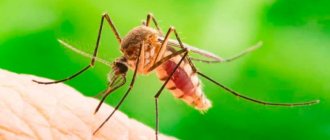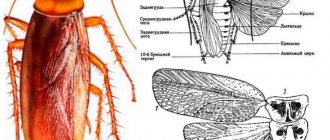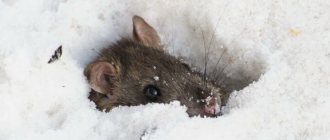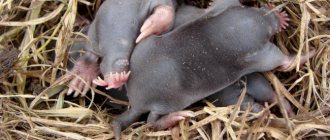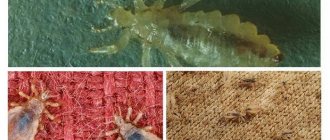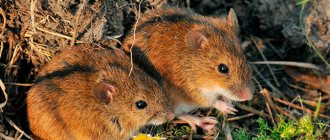- Wild animals
- >>
- Mammals
There are a lot of animals in nature that know how to dig tunnels underground. However, the most famous digger, known since childhood, is the mole . This mammal spends most of its life underground, which is facilitated by the special body structure and physical capabilities of the mole. This is a unique creation of nature, which brings both unconditional benefit and quite serious harm to humans.
Origin of the species and description
Photo: Mole
The mole is a very small animal with tiny eyes and strong paws that have the ability to dig through long underground passages. The eyes of some mole species are securely hidden under the skin. Moles do not have ears; they have smooth, very soft fur. The coat color is usually black, but there are also animals with a dark gray “fur coat”.
Moles are classified as insectivores, which belong to the broad class of mammals. They are part of the mole family - lat. Talpidae. The animals got their name for a reason. Literally, the word “mole” means “digger.” The name comes from the word “dig, dig.”
Video: Mole
These underground inhabitants can make passages hundreds of meters long. Under the soil, the animal arranges a sleeping place for itself and makes special corridors in which it hunts. Moles prefer to spend the night on moss, grass or leaves. They are quite intelligent animals, so a secret passage is always provided in the “bedroom” for retreat in case of danger. The underground passage is covered with bedding.
Interesting fact: Constant movement through narrow earthen passages is reflected in the appearance of the animal. Gradually, the mole wears off its fur, remaining completely bald. However, nature has provided for everything - moles grow a new “coat” 3-4 times a year.
Moles also equip their homes with additional passages to a water source. Some animals create their own underground wells. Wells fill with water during heavy rains. In winter, such animals prefer to hide deep in the ground. At great depths, the earth remains warm and does not freeze.
What do wormholes and passages look like?
The presence of moles in a particular area can be judged by the appearance of the ground surface. At the same time, you can see a large number of cone-shaped slides of freshly dug earth. In the process of digging underground passages, the mole pushes the soil upward. The depth at which the animals dig holes is generally from 2 to 5 meters.
The mole spends most of its time digging holes and moving around them. This lifestyle requires a lot of energy and requires intensive nutrition. If the mole does not receive food for 17 hours, this will lead to its death.
One of the reasons why moles come to gardens is that there is cultivated and well-moistened soil in which it is relatively easy to dig underground passages. In addition, moles have their own natural enemies. Living in close proximity to human habitation, they have the opportunity to avoid them.
Living in the garden, moles leave much less traces, because the soil there is loose and there is no need to push it to the surface.
Molehole
Appearance and features
Photo: Animal mole
The main feature of these small animals is the lack of vision. If for humans and other animals the lack of vision is a serious defect, then for moles it is considered the norm and even a necessity. Having normal eyes, these animals simply would not be able to spend almost their entire lives underground. Moles have eyes, but in most species they are additionally protected by a layer of skin.
Not only the organs of vision are completely adapted to underground life. The hearing organs are also adapted to it. Moles do not have ears. This is also not just provided by nature. If there were ears, then too high pressure would form in them. Such pressure would not allow the animal to be in the soil.
Diggers have fur that is very pleasant to the touch. It also has some features that differ from the fur of other animals. The mole fur covering can be easily folded in different directions. This property allows animals to slip into narrow underground tunnels without problems. The color of the fur is usually black, brown or dark gray.
The appearance of moles can be characterized by the following parameters:
- The total length of the animal is about sixteen centimeters. Of this, the body occupies approximately seven centimeters, and the rest is the length of the head and tail.
- The average weight of the animal is fifteen grams. However, representatives of the family of larger sizes are known. For example, scientists came across the Ussuri mogera, whose length is twenty-one centimeters.
- The body shape of this mammal is bar-shaped. Moles have a tiny head and an almost invisible neck. The auricles of most members of the family are undeveloped, while in others they are very small and covered with hair. Animals also have a nose in the form of a small proboscis. It contains sensitive hairs. The nostrils are directed forward.
- The mammal's paws have five toes. They are the main tool for digging long tunnels. The paws are strong and have claws. The hands resemble shovels; they are turned with the palms facing outward. The mole digs tunnels with its front legs, while its hind legs are less strong. They are very thin and resemble the paws of rats.
general characteristics
In the natural environment, there are several varieties of moles. The smallest representative of the species is the Sichuan shrew mole, its body length rarely exceeds 6–8 cm, its tail is from 5 to 6.5 cm, and the body weight of a mature individual is only 10–15 g. The largest mole is the Ussuri moger, length the body of a mature individual is from 20 cm, and the weight can reach up to 300 g. All moles, without exception, have characteristic features that help them survive underground.
Moles have a short, bar-shaped body, rounded at the sides.
The neck is not pronounced and seems to be a continuation of the body. If you look at the mole from above, it seems that the head grows straight from the shoulders. The shape of the head is cone-shaped, wider at the back of the head with a well-defined narrowing towards the nose.
The animals' ears are vestigial without an auricle. The location of the ear canals is determined by the presence of a skin ridge. In some varieties, the kalik is almost invisible under a layer of wool. The nose of moles is narrow and protrudes strongly above the lower lip; it is mobile and sensitive. The nostrils are wide, located on the sides, but directed forward.
Usually the mole's nose is not covered with hairs, with the exception of long, sensitive whiskers.
Unlike other varieties, the nose of the star-nosed mole ends not with an ordinary lobe, but with unique star-shaped skin outgrowths. They are soft, sensitive and similar to earthworms, the number of outgrowths is about 22 pieces.
Underground life has left its mark on animals. The moles' eyes have lost their intended purpose and are almost completely hidden under the skin. In some species, such as Caucasian moles, the eyeballs can only be seen on an x-ray. In others, the size of the eyes does not exceed the diameter of a poppy seed. Sometimes the eyes are equipped with a regular eyelid, which protects them from dust and soil. But some varieties have small slits in the skin opposite the eyes.
Elena
Ask a Question
Question to the expert
How do moles navigate underground?
Moles cannot see, but they have a well-developed sense of smell and hearing. They are able to smell or hear prey under a thick layer of earth. Animals also navigate thanks to sensitive vibrissae on the nose and tail.
Moles are quite toothy creatures, depending on the species they have maybe 34 to 44 well-developed, sharp teeth. They help hold nimble prey and chew food.
Subterranean mammals communicate with each other using various sounds. They may squeak, hiss or squeal.
Moles have strong and well-developed forelimbs with five-toed paws.
Each toe has a thick, blunt claw designed for digging. The claw is slightly curved outward, and on the inside there is a small depression that allows you to better grip the ground when digging tunnels.
There are no membranes between the fingers, but the hands are wide, spade-shaped and with the palms turned outward.
Under the ground, moles can move forward with their heads or tails. Moreover, the speed in both cases is the same. The fur on the animal's body is located in such a way that it does not interfere with movement. The wool easily bends in the desired direction.
The hind limbs are long, thin and somewhat reminiscent of rat paws in structure. The hind legs have claws, but they are much smaller than the front ones. The tail of moles is quite long, from 2 to 10 cm, its size depends on the type of animal.
Moles are very good swimmers. During a flood, small animals are able to swim across even a strong stream or a small river.
The entire body of animals is covered with soft, dense fur.
The wool grows perpendicularly and has special constrictions in the core. This allows the hairs to bend in any direction and makes it easier for the animal to move underground. Surprisingly, the fur of moles practically does not get dirty; fine debris and dust do not penetrate deeply, but settle at the very ends of the hairs. Therefore, it is enough for the mole to shake itself to clear the soil from its coat.
The color of the coat depends on the type of animal and its habitat. In the natural environment you can find black, dark brown, gray, dark red moles with different shades of fur.
Molting among underground inhabitants occurs 3–4 times a year.
Moles can shed both in the off-season and in the summer. This feature is due to the fact that animal fur quickly wears off from contact with rough surfaces. That is, in fact, the mole constantly renews its fur coat and only in winter does molting not have a pronounced character. Areas of skin where there is no hair become dense and darken. The remaining hairs are quickly wiped off, and new ones grow in their place.
The first molt of moles begins from April to June. Usually the females molt first, followed by the males. The second molt occurs already in July, in adults the spring coat changes to summer, and in young animals the baby coat comes off and an “adult” coat grows. The third autumn moult begins almost without interval; it is well expressed and occurs very quickly. The thin summer coat changes to a thick winter coat. During this period, animal fur is considered the most beautiful; it shines, shimmers, and becomes velvety to the touch.
Question to the expert
Is it possible to have a mole as a pet?
Moles cannot live in captivity. It is important to consider that the animal spends most of its life underground. Therefore, only professionals can provide an unusual pet with comfortable conditions.
Where does the mole live?
Photo: Soil animal mole
Representatives of the mole family are widespread. They live throughout Eurasia and North America. In South America, moles are completely absent. Scientists have concluded that these animals settled in North America when it was separated from the South by the Strait. Moles live in especially large numbers in Russia, Belarus, Poland, Ukraine, Georgia, and Moldova.
In particular, four species of moles live in Russia:
- Blind. It is distributed from Ciscaucasia to Transcaucasia. Representatives of this species can often be found in Turkey and even in Northern Iran. The animal lives in mountains, alpine meadows, and is sometimes found in forest landscapes. To live, blind moles choose loose, moist soils. Sometimes these animals live together with the Caucasian species;
- Caucasian. It settles in the central, western parts of the Caucasus, and is found in some areas of Turkey, which are adjacent to the shores of the Black Sea. Caucasian moles live mainly in deciduous forests, but in small numbers they are found in mountain meadow biotopes. In search of food, such animals can go to a depth of up to one meter. The main passages are located quite close to the surface - at a distance of five centimeters;
- Altaic. It has a uniform coat color, the fur on the belly is matte. The appearance of Altai moles is completely consistent with moles. The body of the animal is quite massive and round;
- Ordinary. This is the group of the most common moles. Its representatives can be found in various landscapes: from forests to mountains.
For a normal life and reproduction, moles need special conditions. For this reason, they choose areas with moist soil. It is most suitable for digging tunnels. The terrain of the area can be almost anything. The animals prefer a moderate climate.
Habitat
Moles live almost all over the world, with the exception of those areas where the ground is unsuitable for digging and cold areas where the soil freezes to great depths. Representatives of the underground world can be found in Europe and Asia. On the Asian part of the mainland, animals are found in the Caucasus, Turkey, China, Mongolia and Indochina. The only exceptions are the southern regions. On the American continents, mole populations are found in southeastern Canada, Mexico, and almost all central and eastern regions.
Mole populations are found only in areas suitable for their existence.
Animals prefer loose soils. They never settle in wetlands. The main condition is the availability of food supply; the more food, the more animals can gather in one area. Populations usually inhabit clearings, forest edges, non-water meadows and agricultural fields.
What does a mole eat?
Photo: Mole insectivore
Moles, although small, are quite voracious animals. They are active around the clock, but hunt more often at dusk. Animals have a high metabolism. In summer, moles eat in large quantities, and in winter, the diet and amount eaten decrease slightly. Animals prefer to live and hunt alone, but sometimes there are also representatives of the family living in groups.
The main part of the mole's diet is earthworms. Mammals eat them in the summer and store them for the winter, biting off the heads of the worms, paralyzing them. Moles also eat larvae of earthworms, larvae of click beetles, May beetles and other varieties of beetles. Flies, caterpillars, and slugs often end up in mole food.
The largest representatives of the mole family, mogers, prefer to feed on butterfly caterpillars. Star-nosed moths eat small aquatic inhabitants. They can feast on crustaceans, small fish and insects. American shrews include plant foods in their diet.
Interesting fact: A tiny mole can eat a huge amount of food in a day. The animal absorbs food, the weight of which is equal to the weight of the animal itself. Also, these mammals are quite thrifty. A mole can store about two kilograms of food in its nest for a rainy day.
In one day, the number of meals can reach six times. After each hearty meal, the mole falls asleep sweetly. Sleep duration is usually four hours. It is during this period of time that the food has time to be completely digested. The animals are not used to going hungry. They can live no longer than seventeen hours without food.
To find a fresh treat. moles do not have to dig new passages every time. They find food in old tunnels into which the worms crawl on their own. Worms are attracted due to the warmth and special smell of moles. In winter, members of the family also do not have to starve. Earthworms are no less active. They are able to make moves even in frozen ground.
Beneficial features
The European mole has useful traits. They are expressed in the fact that the animal was previously an object of the fur trade. The mammal has beautiful and durable fur. At the beginning of the last century, moles were hunted for their valuable skins. But the massive catch led to the fact that the animal began to need protection. In 1928 alone, about 20 million skins were harvested.
In the Soviet Union, mole fur clothing became popular in the 1980s. But today in Russia mammals are not hunted, which is why their population has grown. Their numbers also increase due to mild winters, the construction of greenhouses, and the care of lawns and flower beds .
Moles improve the condition of the soil. They make it loose and saturate it with oxygen, which can save the earth from the formation of swamps. Animals destroy pests because they feed on them. Moles eat chafers, mole crickets, and insect larvae.
Features of character and lifestyle
Photo: Common mole
Almost the entire life of a mole is spent in complete darkness. They build incredible labyrinths in which they then live and hunt. Labyrinths can lie at different depths in the ground. Digging takes an animal a lot of time. Above the passages, which are located close to the surface of the earth, you can always notice a characteristic roller. The depth of the labyrinths depends on the type of soil. If it is loose and wet, the passages are made at a shallow depth; in dry soil, channels are dug at a depth of twenty centimeters.
The deepest tunnels are dug by animals under forest paths. Nests are also located at great depths. On average, females build nests at a depth of 1.5 meters. The nest is carefully lined with grass and leaves. Animals can from time to time roam around the area where they live. In the summer they descend to the lowlands, in the spring - to the hills. In spring, male moles can expand their territory several times. This is due to the search for a female for reproduction.
Moles have a contradictory character. They are grumpy and quarrelsome. Very rarely animals live in a group. They unite in pairs only when the time comes for the mating season. Moles show friendliness only at a young age. Young individuals caress each other. But with the process of growing up, not the best qualities begin to appear - grumpiness, pugnacity.
Adults often start fights if they meet each other on the way. They are capable of mercilessly biting to pieces an opponent. It is not surprising that in captivity, representatives of the family eat the meat of their relatives with great appetite. Also, moles do not have empathy. If their neighbor gets into trouble or dies, there will be no help. Moles quickly occupy the tunnels of the dead animal and use it for their own purposes.
Burrow construction
The mole spends most of its life underground. Only to develop a new area does it come to the surface. The animal digs two types of tunnels:
- veins;
- search engines
The first ones are also called nests; the mammal rests and hides in them during the cold season. They lie at a depth of 10−90 cm, and their diameter is only 5 cm. Closer to the surface, the mole makes search passages. He digs them so that earthworms and other underground invertebrates live nearby. The network is extensive, it can occupy significant areas - hundreds of square meters. Moles leave traces behind them: soil rollers that appear due to the swollen arches of passages.
The animal digs the ground with its front paws, and rests against the already compacted walls of the hole with its hind paws. At a depth of 10 cm, the mammal can no longer raise its head, so it throws the soil to the surface.
These heaps are called molehills; they reach 15–25 cm in height and up to 1 m in diameter. They are usually gathered in small groups. Molehills are the only sign of the presence of moles on the site that a person can detect.
Social structure and reproduction
Photo: Mole wild animal
Representatives of the mole family reproduce once a year.
However, the number of moles and the breeding season differs among different species:
- The Siberian breeds in June. However, offspring appear only a year later, in the spring. On average, pregnancy lasts about two hundred and seventy days. At one time, the female gives birth to no more than six cubs;
- The Caucasian prefers to mate in February, and moles appear in March. No more than three cubs are produced at a time. The brood becomes independent within forty days after birth. Representatives of this species increase their numbers very quickly, because the offspring appear very deep underground. He is in no danger;
- The European mate in the spring - during March and April. Forty days after meeting the male, the female gives birth to moles - about nine individuals at a time. The weight of one cub, as a rule, does not exceed two grams;
- Blind. It breeds in February; the gestation period for the young is one month. The female gives birth to about five individuals at a time.
Interesting fact: The lifespan of a mole depends on its species. On average, members of the family live from three to five years.
Mammal Reproduction
Moles are unsociable, but during the breeding season they make exceptions and show interest in individuals of the opposite sex. Males look for partners underground, where mating takes place. But after that they prefer to live as before. The males return to their nests and are completely uninterested in the female and their young.
The mating season repeats every year, and its seasonality depends on the habitat. It lasts only 2-3 days - until the female responds to courtship and agrees to mate. The mother carries the child for 40 days, then he is born. This is a poorly developed, hairless and completely blind mole. From 3 to 9 babies can be born at one time. Moles belong to the class of mammals, so females feed them with their milk, which is quite fatty.
The cubs develop very quickly; after just a couple of weeks they turn into real moles. The babies begin to eat earthworms. And a month later they dig their first passages underground. At this age, the child leaves his mother and learns to get his own food.
The new generation leaves the parental nest and is looking for areas to settle. Females may even bite the cubs if they want to return home. The life expectancy of a mole is 6-7 years. But in the wild, mammals die earlier due to attacks by predators and diseases.
Natural enemies of moles
Photo: Mole underground animal
Representatives of the mole family have few natural enemies. They can only be harmed by birds of prey, wild boars, badgers, and martens. Such animals often die from an arid climate, too much moisture, or at the hands of humans themselves. People kill animals either intentionally or accidentally. Some are trying to catch the mole and domesticate it. But such an undertaking also ends in the death of the animal.
Also, a small number of adult individuals die from the paws of their relatives. Adult moles are quarrelsome and pugnacious, so fights between them are not uncommon. Fights usually end with the death of one of the fighters.
Interesting fact: Moles have no natural enemies, only underground. If the animal does not climb to the surface of the earth, then nothing threatens it.
Representatives of the species
In total, the family includes about 40 different species of animals.
Ordinary
It is standard or European. A typical representative of its species, which is familiar to many gardeners. A small rodent with a soft velvet skin and an aggressive character. There are a number of subspecies of this animal:
- blind;
- Caucasian;
- long-tailed;
- Siberian.
Starburst
It is also called the star-nosed mole, from the same mole, with unusual processes on its proboscis.
Starburst.
Japanese shrew
The only representative of the species, so named for its resemblance to shrews. The difference between the species is the ability to live in trees. He can arrange a home for the press both underground and in a nest.
Shrew mole.
Siberian or Altai mole
Siberian or Altai mole
A variety of the common mole. It differs from its relatives in its large size. Lives in Siberia and Mongolia.
- The mole's body size is about 20 cm. Females are slightly smaller.
- The length of the tail does not exceed 4 cm.
- The eyes are round, small, and have a movable eyelid.
- The muzzle is elongated, with a well-defined nose.
- The ears are small, almost invisible.
- The mole's shovel-shaped front paws have long claws; the hind paws are similar to rat limbs.
- The coat is dark black, but can be smoky, yellow, or brown.
- The Siberian mole weighs from 100 to 225 g.
A distinctive feature of this type of mole is its long pregnancy. Fertilization occurs in the summer, but the embryo freezes until spring. Cubs appear in April-May. Pregnancy lasts 9 months. There are about 11 cubs in the litter.
The main food is earthworms, followed by beetle larvae, pupae, and small insects. A Siberian mole can easily gnaw on a mouse, lizard, sick rat, mole cricket, snake, snake, or frog. There are cases of cannibalism. The winner takes possession of the victim's possessions, marking his territory with a special secret.
How to get rid of moles on the site
Various means are used to combat these animals:
- It is known that the smell of wormwood is very unpleasant for moles. Therefore, where it grows, these animals try not to appear.
- Another means of control is to spray garden bushes and trees with a solution that includes peppermint oil.
- If legumes are planted on the site, then this land will not be suitable for moles. The same can be said about planting onions and garlic. If you plant the borders of the site with these crops, then moles will not live there.
- It is believed that if you plant the imperial hazel grouse, it will help get rid of these animals.
- An effective means of controlling moles is the use of traps. A dog can help you install them correctly. The smell of mole enzymes is very unpleasant to them and they can distinguish the smell well. The dog will help you find the exit of the wormhole to the surface. Usually it is covered with earth. Therefore, before installing a trap, you need to remove a pile of earth above the surface and dig a little deeper into the hole. You need to install a trap at the exit from it. Since this passage is dug, the mole will feel a draft and will come to cover the exit from the hole with earth. At this moment he will fall into a trap. If the hunt for the mole ended successfully, then it may still be alive. If a mole hunter adheres to humane views of them, then he has the opportunity to take the animal and take it far into the forest or field and release it there. If the mole is dead, then it must be buried. This must be done away from sources of drinking water.
- Another option to get rid of moles on your property is to use sound repellers. There are two options for such devices:
- reed;
- using plastic bottles.
In the first case, you need to do the following. You need to cut the reeds in such a way that you get a segment of one and a half meters. In order to install it correctly, it is necessary to determine where the wormhole runs. Then you need to install the reed vertically so that the lower end falls exactly into the mole passage.
In this case, the upper part should remain above the ground. Its length should be approximately half the reed. If windy weather begins, sounds will be transmitted inside the mole tunnel. For these animals they are very unpleasant. This way you can drive moles out of your area.
Another version of the “sonic weapon” can be made using plastic bottles. Holes are made in them into which metal rods are installed. The latter are immersed in the ground in such a way as to fall into the wormhole. During strong winds, this structure will vibrate and make sounds that will fall into the hole. Such sounds are unpleasant for moles and will gradually force them to leave.
The industry produces chemicals to combat these animals. Usually their use can produce a quick and effective effect.
However, when deciding on the use of such products, owners must take into account that they contain phosphorides. Such substances can have harmful effects on the soil. Therefore, you need to weigh the benefits and harm received from such means before resorting to them. In addition, the use of phosphorides will also be dangerous for other warm-blooded animals, not just moles. If the farmer has them and can get into the cultivated area, then such animals will be endangered.
The use of chemicals to combat moles occurs in the following order. First you need to determine exactly where the mole tunnels are. Chemicals are placed where their exits are located.
For this purpose, you can use the Nutcracker product. It has a reputation for being a very effective way to control moles. This drug looks like a thick and viscous substance, which is poured at the mole exits onto the surface of the earth.
Watch the video on how to remove moles:
